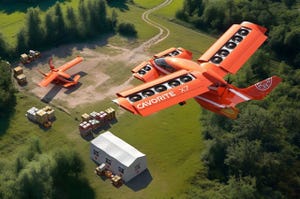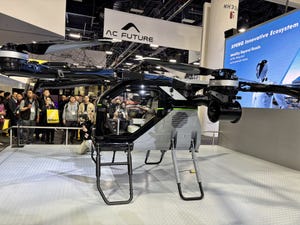Humanoid Robot Tackles Warehouse Tasks in New Video
LimX Dynamics’ CL-1 humanoid robot is shown moving heavy objects around a warehouse setting
.png?width=1280&auto=webp&quality=95&format=jpg&disable=upscale)
Robotics manufacturer LimX Dynamics recently unveiled the latest updates to its humanoid robot, CL-1, with a video showing it moving heavy objects around a simulated warehouse.
The three-minute, one-take video demonstrates upgrades to the robot’s hardware, which improve “real-time perceptive loco-manipulation and whole-body control.” With the upgrades, CL-1 is able to continuously lift, carry and load heavy objects onto shelves — challenges it would confront in warehouse work, one of the use-cases most frequently cited as ripe for humanoid employment.
Specifically, CL-1 is shown in multiple postures, including a loaded deep squat, loaded stand from a squat, loaded lift and loaded walking. The robot picks up and carries bins of juice weighing up to 18 pounds from tables and places them on upper and lower shelves. In one part of the video, a man moves a bin the robot was planning to pick up, the robot notes the disruption and autonomously replans and completes the task.
“These advancements further unleash the advantages of the general-purpose form factor of humanoid robots,” LimX said in a blog post. “This marks a milestone in the general mobile manipulation and signifies a further enhancement in LimX Dynamics’ embodied intelligence technology.”
The demonstration video follows another one LimX released in April in which the CL-1 climbs stairs with alternating feet and goes from standstill to running and back. The running task required overcoming several difficult issues, including significant center-of-mass shifts, having both feet airborne at the same time and full-body coordination, LimX said.
In a December 2023 update, the company said CL-1 is one of the few humanoid robots able to climb stairs based on real-time terrain perception and attributed the ability to its advanced motion control and AI algorithms, as well as its hardware.
“Whether climbing stairs with larger strides or running back and forth, more stringent requirements are placed on the robot’s power performance and stability,” LimX said. “Its joints boast improved performance — enhanced torque, rotational speed and reduced reaction time.”
Looking ahead, LimX said its research and development efforts will focus on integrating the real-time terrain perception with reinforcement learning.
About the Author
You May Also Like








